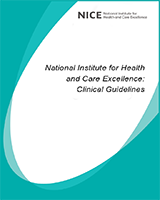From: Chapter 9, Community nursing

NCBI Bookshelf. A service of the National Library of Medicine, National Institutes of Health.
| Recommendation | - |
| Research recommendations | RR6. What is the clinical and cost effectiveness of providing extended access to community nursing, for example during evenings and weekends? |
| Relative values of different outcomes | The committee considered mortality, avoidable adverse events (for example, sepsis), quality of life, patient and/or carer satisfaction and presentation to ED as the critical outcomes for decision making. Other important outcomes included length of stay, unplanned hospital admission (ambulatory care conditions), delayed discharge and staff satisfaction. |
| Trade-off between benefits and harms |
No evidence evaluating the effectiveness of extended access to community nursing/district nursing compared with standard access was found. The committee noted that the provision of extended access to community nursing/district nursing may prevent presentation to the ED in certain populations (for example, palliative care), who are likely to have urgent care needs which can be appropriately managed by a community/district nurse. The district nursing educational and career framework published by NHSE in 2015105 outlines the expectation that community nurses will enable early detection of deterioration and prompt escalation to avoid hospital admission. The community nurse is well placed to recognise a change in condition for patients with long tern conditions at risk of AME. It was also considered that the provision of extended access to community nursing/district nursing would be unlikely to prevent presentation to the ED among other populations (for example, those with chest pain). However, there was no research evidence to support or contradict either of these considerations. Therefore, the committee chose not to develop a recommendation given the lack of evidence available. The committee considered the complex range of care delivered by community nurses to patients with a long term condition who are at risk of an AME, and also support provided for post-operative patients (e.g. wound care) and that enhanced access could prevent ED presentation and admissions 7 days week. As there was no evidence to support a positive or negative recommendation, the committee decided to make a research recommendation. |
| Trade-off between net effects and costs | No economic evaluations were included. In the absence of evidence, the unit costs of a community nurse and ED visit were presented (Chapter 41 Appendix I). The committee noted that a community nurse visit is substantially cheaper than an ED visit. Extended access to a community nurse might be cost effective or even cost saving if it were to prevent ED presentations without a negative effect on clinical outcomes. However, this needs to be researched. |
| Quality of evidence | No RCT, observational or economic evidence was identified for this question. |
| Other considerations |
The committee noted the complex roles of community nurses in the NHS. The RCN has identified the three care domains for the effective delivery of district nursing services such as:
Standard access to community nursing/district nursing is variable across the country but mostly covers Monday to Friday usually 08:00 – 18:30h. During evenings and weekends staffing is reduced, so the service aims to accommodate the more urgent needs such as facilitating hospital discharge, dressings that require changing daily, support with insulin administration or palliative care. In the event of an urgent care requirement during the evenings and weekends, there is usually an out of hours’ telephone number to call. The committee considered how providing extended access to community nursing/district nursing would change current practice. Standard access to community nursing/district nursing is variable across the UK; therefore, the impact of implementation would differ according to region. In the context of 7 day services in the hospital the likelihood is that access to community/district nursing at weekends becomes more important as there would be an expectation that more patients may be discharged at weekends. It was also highlighted that despite the distinction between patients with urgent care needs that could be appropriately managed by a community/district nurse and those with acute medical emergencies who are likely to require other forms of care, for the average patient, every urgent health problem is an acute medical emergency. Those with less social support are more likely to need extended working as they may not have access to other support networks Enhanced access would mean that patients could be seen by their regular district nurse in response to their clinical needs as opposed to the skeleton service which operates at weekends for only the highest priority patients. This may lead to:
|
From: Chapter 9, Community nursing

NCBI Bookshelf. A service of the National Library of Medicine, National Institutes of Health.